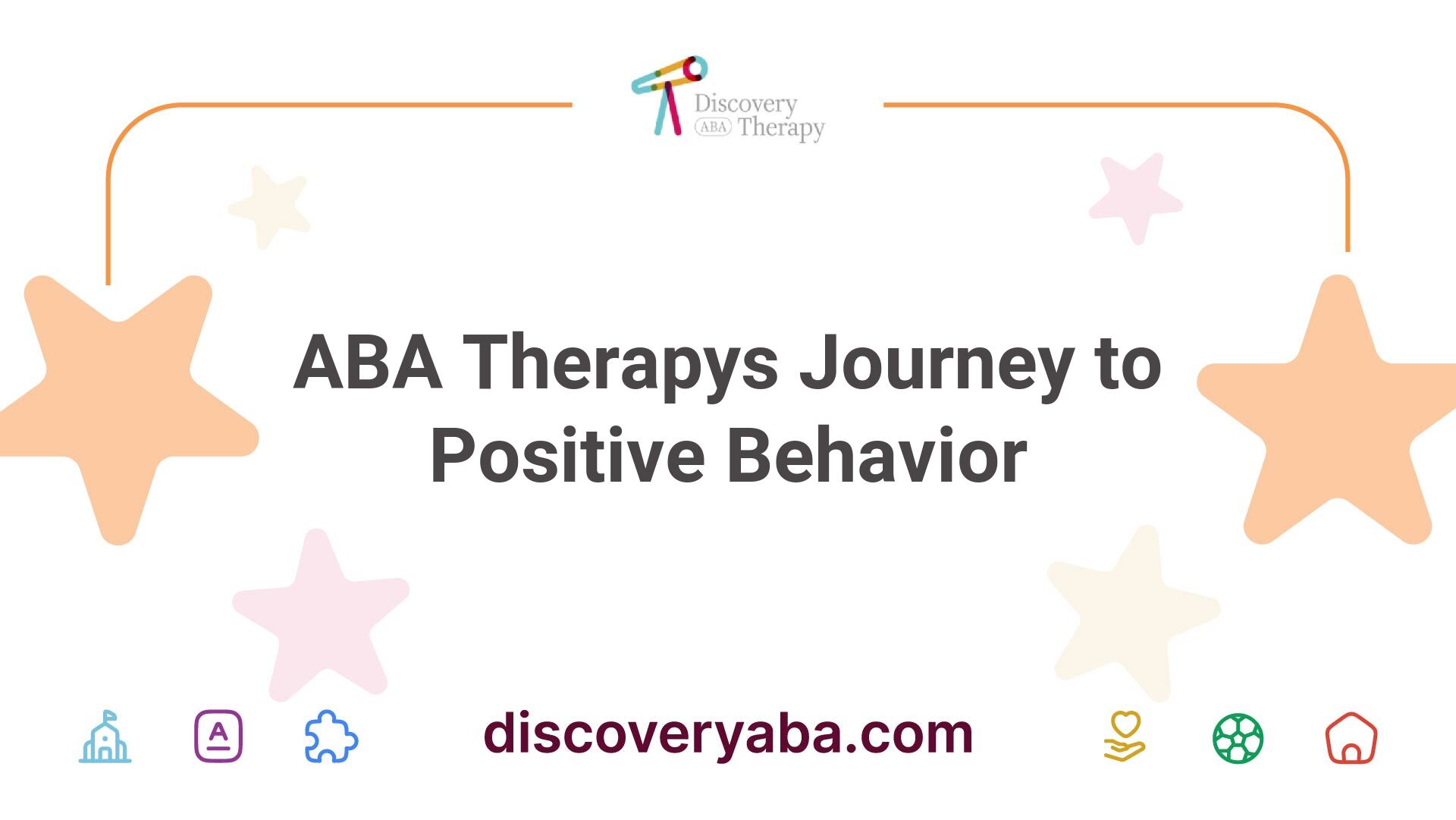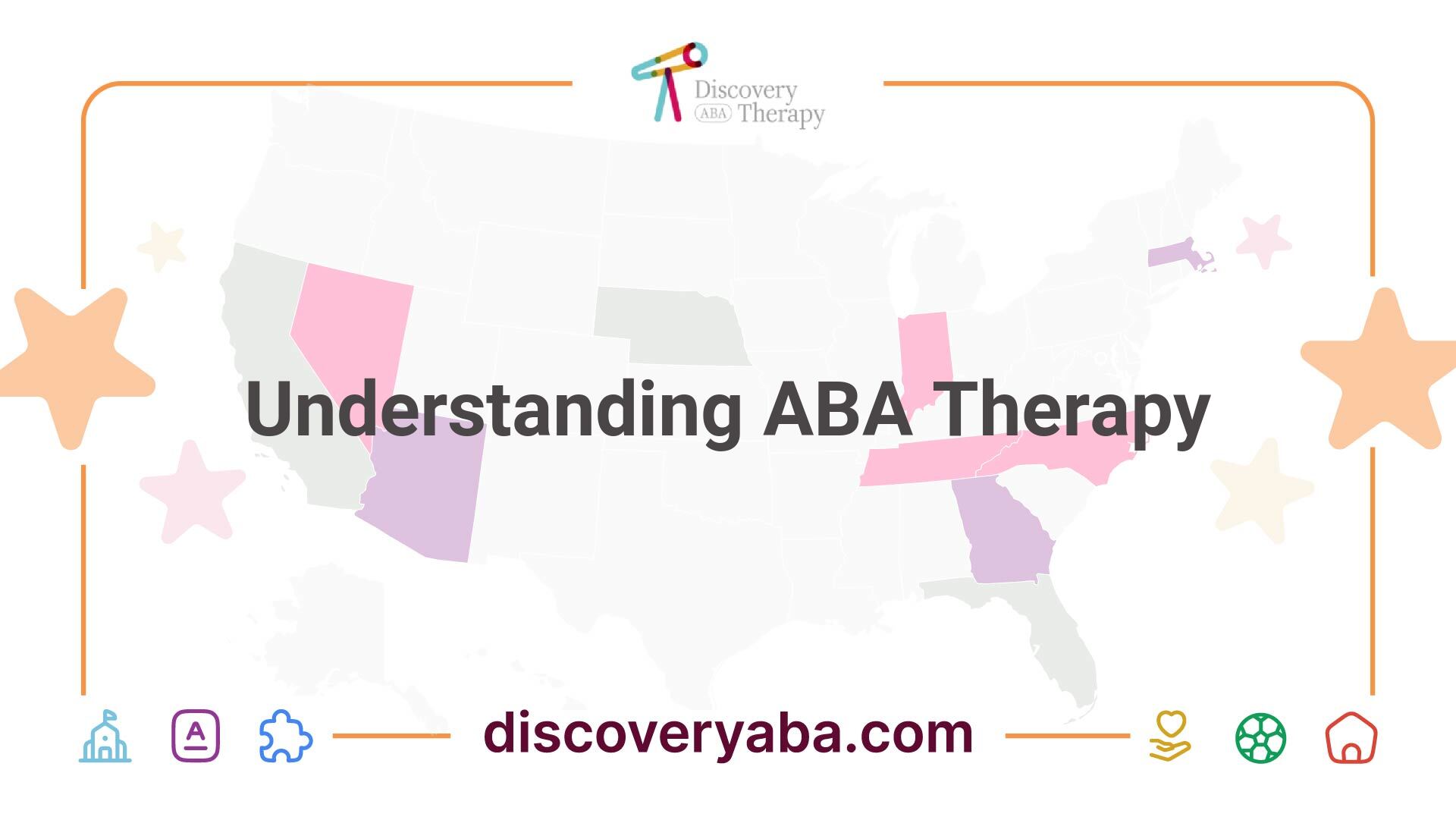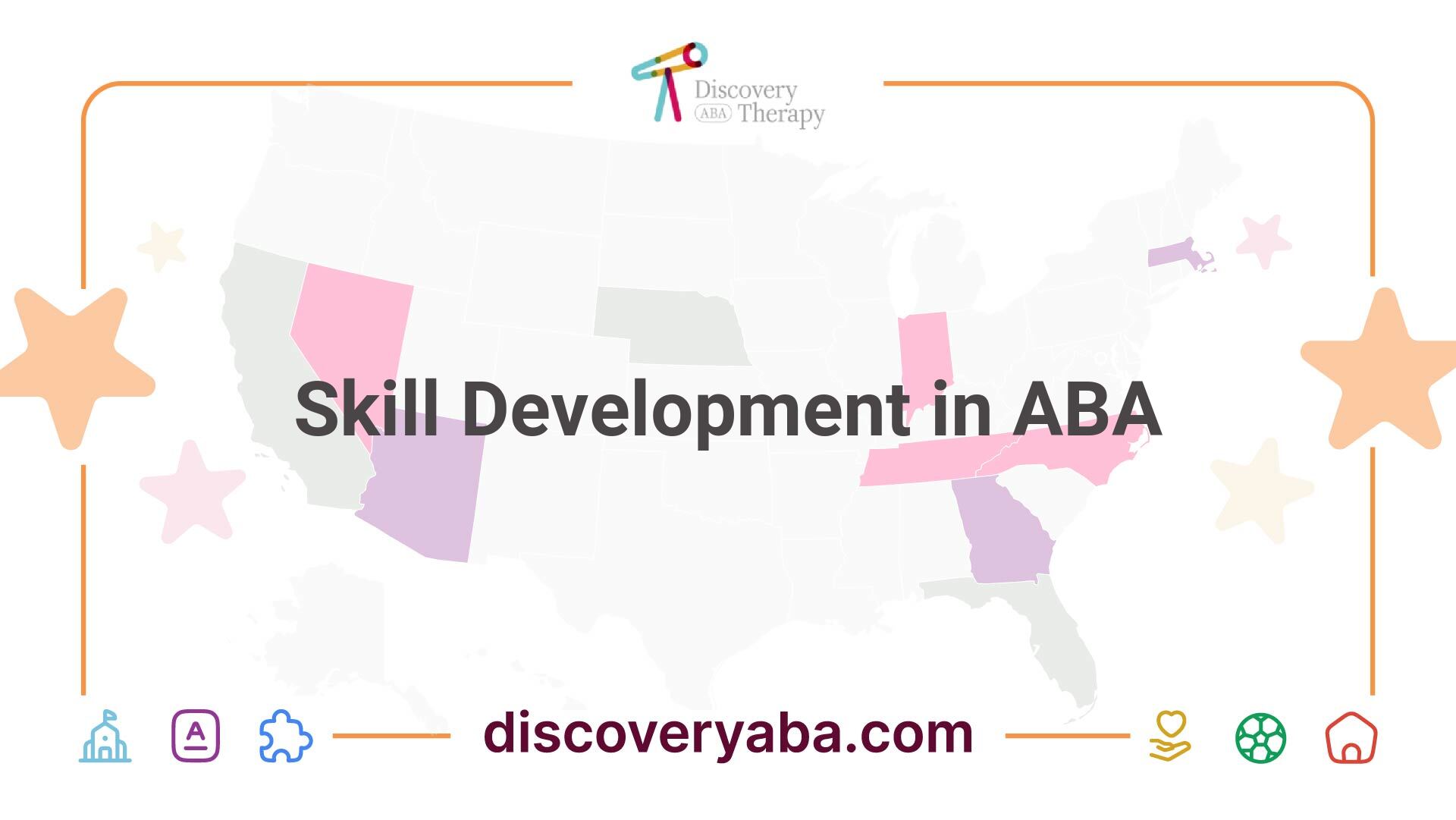ABA Therapys Journey to Positive Behavior
Discover how ABA therapy supports positive behavior changes, fostering growth and skill development for individuals with autism.


Understanding ABA Therapy
Applied Behavior Analysis (ABA) therapy plays a crucial role in supporting individuals with autism in achieving positive behavior changes. It utilizes structured techniques to encourage desired behaviors through consistent reinforcement and applies scientific principles to real-life situations.
Principles of ABA Therapy
ABA therapy is guided by several foundational principles that are designed to promote meaningful behavior changes. This approach encourages improvement in daily living by focusing on behavior modification through seven key dimensions of practice:
PrincipleDescriptionGeneralityThe ability for learned behaviors to occur in various environments and situations.EffectivenessThe intervention must produce significant, observable changes in behavior.Technological ApplicabilityTechniques used should be detailed and replicable across different cases and practitioners.Applied Real-Life Skill TrainingFocus on skills that have practical applications in the individual's daily life.Systematic Conceptual ApproachEmploy structured methods and principles based on scientific research.Reliable Data AnalysisContinuous data collection to monitor progress and inform treatment adjustments.Focus on Measurable Behavior ImprovementsTarget specific behaviors that are clearly defined and can be tracked over time.
ABA techniques aim to reshape behavior, encouraging positive outcomes while reducing challenging behaviors. For more insights on behavioral challenges, visit our article on ABA for behavioral challenges in autism.
Individualized Treatment Plans
Individualized treatment plans are a cornerstone of effective ABA therapy. Each plan is tailored to fit the unique needs of the individual. Board Certified Behavior Analysts (BCBAs) collaborate with behavior technicians to design these plans, ensuring that all interventions are personalized and appropriate.
Data collection plays a vital role in the process. Regular monitoring and analysis of behavior allow therapists to adjust treatment as necessary, enhancing the success of the program [1]. The focus on practical skills helps individuals navigate their daily lives more effectively, from managing self-care to improving communication skills. For further exploration of communication aspects, visit how ABA therapy can improve communication in autism.
In sum, ABA therapy utilizes the principles of behavior analysis and individualized planning to support individuals with autism, fostering environments for learning and development through well-structured and consistent interventions.

Skill Development in ABA
Applying ABA therapy can significantly aid in the development of vital skills for individuals with autism. This section explores how ABA supports communication and social skills, as well as self-care and academic skills.
Communication and Social Skills
ABA therapy focuses on enhancing communication and social abilities through structured methods. A systematic approach fosters consistent practice and reinforcement, leading to meaningful skill acquisition [2]. Children learn to navigate social cues and engage in appropriate behaviors by implementing a reward system that encourages positive actions while teaching the consequences of negative behaviors [3].
Specific techniques employed in ABA therapy for improving communication include:
Skill AreaTechniques UsedCommunicationPositive Reinforcement, Functional Communication TrainingSocial SkillsDiscrete Trial Training, Social Stories
By employing these methods, children gradually learn what is socially acceptable, preparing them for real-world interactions. For additional information on how ABA enhances social skills development, see our article on benefits of ABA therapy for social skills development.
Self-Care and Academic Skills
ABA therapy also emphasizes the development of self-care and academic skills, allowing individuals to gain independence in daily living. By understanding how environmental factors influence behavior, ABA aims to create meaningful changes that are durable over time. Identifying triggers and consequences is key to modifying behaviors effectively [4].
Key areas of focus include:
Skill TypeFocus AreasSelf-CareGrooming, Bathing, DressingAcademicLiteracy, Numeracy, Homework Completion
ABA therapy encompasses a range of strategies to ensure comprehensive skill development. For further details on implementing self-care skills in ABA settings, refer to our article on teaching daily living skills through ABA therapy.
By integrating communication, social, self-care, and academic skills into therapy, individuals with autism are better prepared for independent living and positive interactions within their communities.
Positive Behavior Changes
ABA Therapy focuses on using behavioral principles to promote positive behavior changes and improve the overall quality of life for individuals with autism spectrum disorder (ASD). It involves customized intervention strategies that encourage appropriate behaviors while addressing challenging ones.
Promoting Positive Behaviors
One of the core objectives of ABA Therapy is to encourage positive behaviors through the use of positive reinforcement. When a desired behavior is followed by a reward, the individual is more likely to repeat that behavior in the future. Rewards can be tailored to the individual’s preferences, such as verbal praise, toys, or access to preferred activities [5]. This method effectively strengthens desired behaviors, making it a fundamental principle within the therapy.
Reward TypeDescriptionPraiseVerbal acknowledgment of the behaviorTokensCollectible items exchanged for rewardsPreferred ActivitySpecial activities after completing tasks
The following chart illustrates an example of how positive reinforcement can alter behavior over a series of sessions:
SessionBehavior TargetedReinforcement UsedBehavior Outcome1Asking for helpVerbal praiseIncreased attempts to ask for help2Sharing toysPlaytime with a friendIncreased sharing interactions3Using mannersStickers as rewardsHeightened use of 'please' and 'thank you'
By adopting a collaborative approach that includes parents and caregivers, ABA therapy ensures that the reinforcement strategies are consistently applied across different settings.
Reducing Challenging Behaviors
In addition to promoting positive behaviors, ABA Therapy is also adept at mitigating challenging behaviors. These behaviors can stem from various underlying causes, such as communication difficulties or environmental triggers. Through ABA, therapists analyze these antecedents and consequences to identify effective strategies for reducing challenging actions [2].
For example, a child who throws tantrums to express frustration might learn alternative communication methods through ABA techniques. By teaching appropriate ways to communicate, such as using visual aids or sign language, the need for disruptive behaviors is decreased.
The following table illustrates common challenging behaviors and their alternative strategies addressed through ABA therapy:
Challenging BehaviorUnderlying CauseRecommended InterventionTantrumsInability to express needsCommunication skills trainingAggressionFrustration or sensory overloadCoping techniques and self-regulation strategiesSocial withdrawalAnxiety in social situationsGradual exposure and social skills training
When properly implemented, ABA therapy not only focuses on changing behaviors but also emphasizes the development of skills that provide individuals with better tools for interaction, ultimately leading to a more enriched life.
For more specific concerns, such as managing aggressive behaviors, see our article on managing aggressive behaviors with aba.
Collaborative Approach
A collaborative approach is essential in ABA therapy, as it involves therapists, parents, caregivers, and other professionals in a coordinated effort. This teamwork ensures that the individual receives consistent support, which is crucial for making progress and generalizing skills outside therapy sessions.
Involving Parents and Caregivers
Parents and caregivers play a vital role in the implementation of ABA therapy. Their involvement not only helps reinforce skills learned during therapy but also provides insights into the unique needs and behaviors of the individual with autism. Effective communication between the family and the therapy team is key to ensuring that interventions are aligned with the individual’s daily life and environment.
Training is often provided to parents and caregivers, equipping them with strategies to maintain consistency in behavior expectations. They learn effective techniques to promote positive behaviors at home and how to manage any challenging behaviors. By engaging in this collaborative process, families create supportive atmospheres that can enhance the effectiveness of ABA for behavioral challenges in autism.
Coordinated Professional Effort
The coordinated efforts of professionals, including behavior analysts and registered behavior technicians, contribute significantly to the effectiveness of ABA therapy. A Board-Certified Behavior Analyst (BCBA) is responsible for designing and overseeing the ABA programs, ensuring they are tailored to meet the individual's needs [5]. The BCBA works closely with behavior technicians, who are trained to implement the techniques during therapy sessions.
Regular data collection is integral to the collaborative effort, allowing for ongoing analysis and necessary adjustments to interventions. This data-driven approach helps in tracking progress, identifying effective strategies, and ensuring the individual is meeting their goals [2]. The combined expertise of these professionals fosters a comprehensive support system that maximizes positive behavior changes and enhances the overall quality of life for individuals with autism.
For additional insights into managing specific challenges, parents can explore topics such as improving emotional regulation with ABA and reducing social isolation with ABA. These resources provide valuable strategies that align with the collaborative approach to ABA therapy.
Effectiveness of ABA Therapy
Evidence-Based Practice
ABA therapy is recognized as an evidence-based best practice treatment by leading organizations such as the US Surgeon General and the American Psychological Association. Research indicates that intensive and long-term therapy utilizing ABA principles positively impacts intellectual functioning, language development, daily living skills, and social functioning for many individuals with autism. Over 20 studies support these findings, confirming that ABA therapy leads to significant improvements in various developmental outcomes [5].
The empirical foundation of ABA therapy means its techniques and strategies have undergone rigorous scientific scrutiny. Studies have shown meta-analyses of 29 independent studies indicate ABA interventions are moderately to highly effective, particularly in enhancing communication skills, intellectual capabilities, and socialization among children with Autism Spectrum Disorder (ASD) [6].
Outcome AreaEffectiveness LevelCommunication SkillsModerately to Highly EffectiveSocializationModerately to Highly EffectiveIntellectual AbilitiesModerately EffectiveDaily Living SkillsModerately to Highly Effective
Benefits Across Age Groups
ABA therapy is versatile, providing benefits across various age groups. It is particularly impactful for children, but its techniques are also favorable for adolescents and adults. Research suggests significant improvements in areas such as socialization, communication skills, and emotional regulation, leading to enhanced quality of life.
For children, ABA interventions have shown marked effectiveness in improving expressive and receptive language skills, adaptive behavior, and social interactions. In studies, ABA-based programs yielded positive results in helping children learn functional skills necessary for daily living and interacting with peers.
As individuals grow older, the skills and coping strategies acquired through ABA can be beneficial in academic and employment settings. Adults who have undergone ABA therapy often report improved self-regulation and emotional control, allowing them to navigate social situations more adeptly. The benefits of ABA extend to adolescents as well, where interventions have shown promise in addressing anxiety and behavioral challenges [7].
Age GroupKey BenefitsChildrenImproved communication, socializationAdolescentsEnhanced emotional regulationAdultsBetter self-regulation and coping
Maintaining consistency in applying ABA techniques across different life stages is essential to ensure ongoing progress. For additional insights, visit our articles on managing aggressive behaviors with aba and how aba therapy helps with self-regulation in autism.
Techniques in ABA Therapy
ABA therapy employs various techniques to support positive behavior changes, promoting skill development and reducing challenging behaviors. This section examines three fundamental approaches used in ABA: positive reinforcement, discrete trial training, and antecedent-based interventions.
Positive Reinforcement
Positive reinforcement is a cornerstone strategy within ABA therapy. It suggests that an individual is more likely to repeat a behavior if it is followed by a reward. Rewards can vary and should be meaningful to the person, potentially including praise, toys, or access to preferred activities.
The primary objective is to encourage positive behavior changes by consistently following desired actions with positive outcomes. This method not only fosters skill acquisition but also boosts self-esteem and motivation in individuals with autism. For detailed insights on reinforcement, explore our article on how aba therapy and positive reinforcement.
BehaviorReward TypeExamplesCompleting a taskVerbal praise"Great job on your homework!"Sharing with peersPreferred activity5 extra minutes of playtimeExpressing feelingsTangible rewardSmall toy or sticker
Discrete Trial Training
Discrete Trial Training (DTT) is a structured approach in ABA that breaks down skills into manageable components. Each skill is taught in discrete, teachable parts, enabling systematic learning.
During DTT, the therapist presents a specific instruction, observes the individual's response, and provides positive reinforcement for correct answers. This technique is particularly effective for teaching new skills, such as communication and social interactions. More information on DTT can be found in our resource on how to set realistic goals in aba therapy?.
StepActionInstructionTherapist asks a question or gives a command.ResponseIndividual responds to the instruction.ReinforcementReward provided for correct answers.
Antecedent-based Interventions
Antecedent-based Interventions (ABI) focus on modifying or adjusting the environment to prevent challenging behaviors before they occur. This technique helps individuals with Autism Spectrum Disorder (ASD) by minimizing distractions and reducing triggers that may lead to undesirable behaviors.
By creating a supportive environment, ABA therapy encourages focus on desired tasks while fostering the individual's ability to navigate social situations. For additional strategies related to managing behaviors, see our article on managing aggressive behaviors with aba.
StrategyModificationOutcomeReducing noise levelsUse quieter environments for activities.Decreased distractionOrganizing materialsKeep necessary items within reach.Improved focus and engagementVisual schedulesProvide clear visual cues for daily tasks.Enhanced expectation management
These techniques highlight the effectiveness of ABA therapy in promoting positive behavior changes. They not only support individual growth but also enhance the overall quality of life for people with autism. With these strategies in place, each session aims at developing essential skills while upholding a strong emphasis on positive outcomes.
References
[2]:
[3]:
[4]:
[5]:
[6]:
[7]:
Find More Articles
Contact us
North Carolina, Tennessee, Nevada, New Jersey, Utah, Virginia
New Hampshire, Maine
Massachusetts, Indiana, Arizona, Georgia
.avif)

























































































%2520(1).jpeg)

